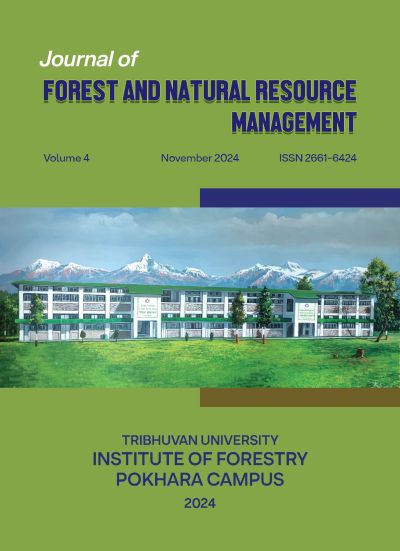Climatic Trends and Local Perception in Nechasalyan Rural Municipality: A Climate Change Scenario
DOI:
https://doi.org/10.3126/jfnrm.v4i1.74226Keywords:
Climate change, local people, perception, rainfall, temperatureAbstract
Climatic policy responses are influenced by how communities and individuals perceive and understand climate variabilities and changes. Integrating community perceptions with observed climate data can provide valuable information to support policies to reduce climate-related risks and enhance climate change adaptation. This study examines climate change in the Nechasalyan Rural Municipality of Solukhumbu district, Nepal, through an integrated analysis of meteorological data and local people's perceptions. Temperature and rainfall data for 31 years i.e. 1991-2021 were collected and analyzed from nearest Meteorological station (Okhaldhunga Station). Local peoples’ perceptions were gathered from the household survey (n=70) along with key informant interview (n= 10) and focus group discussion (n= 5). The analysis revealed that the average maximum, winter and summer temperature trends seemed to be increasing where average minimum trend was decreasing of which only average winter temperature was significant (p<0.05). Despite insignificance in the increases in average annual maximum and summer temperatures, they pose potential challenges in the long run. Similarly, the average annual rainfall as well as seasonal rainfall trends seemed to be decreasing, and only average July rainfall trend was statistically significant (p<0.05). The results indicate that while local perceptions about the changes in the temperature were consistent, there was disconnection between these perceptions and observed rainfall trends. The consistency between local perceptions and rising temperature trends suggests that people remember temperature changes more vividly than rainfall patterns, warranting future research to investigate the causes of disparities between local perceptions and observed climate trends. Additionally, exploring effective communication strategies to bridge the gap between scientific findings and local understanding could enhance community climate resilience.
Downloads
Downloads
Published
How to Cite
Issue
Section
License
© Institute of Forestry, Pokhara Campus




